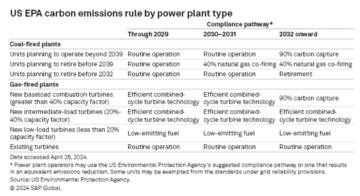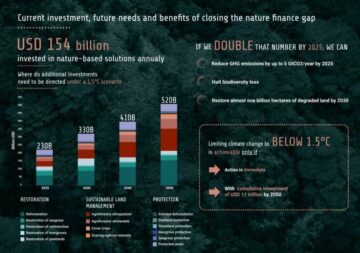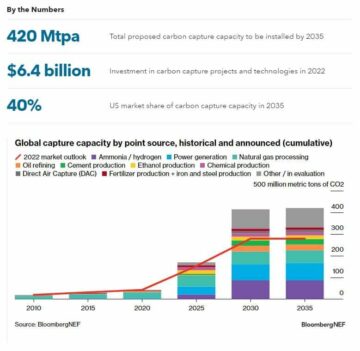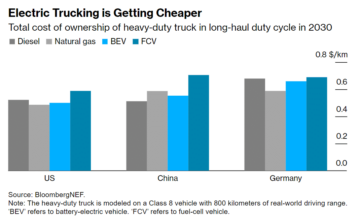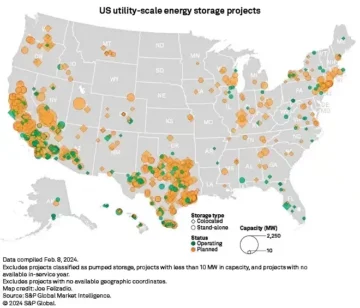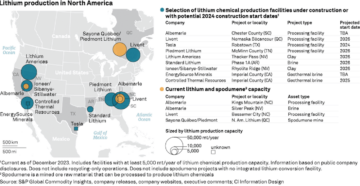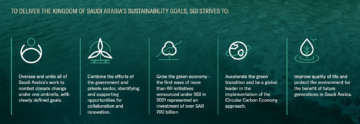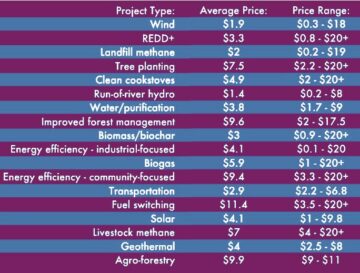According to Wood Mackenzie, Australia has an AU$600 billion (around US$400B) opportunity to become a leader in carbon capture and storage (CCS) in the Asia-Pacific region.
The country’s geological CO2 storage capacity far exceeds its domestic needs, creating an opportunity to store emissions from key trading partners like Japan and South Korea, which lack sufficient storage options. This could generate significant revenue by charging fees for transporting and storing CO2.
CCS is Pivotal For Australia’s Net Zero Goal
Earlier this year, Wood Mackenzie reported that 2024 will be a strong year for CCS or CCUS. The research company estimated that global CCUS capacity will grow from 80 metric ton per annum (Mtpa) to more than 500 Mtpa.
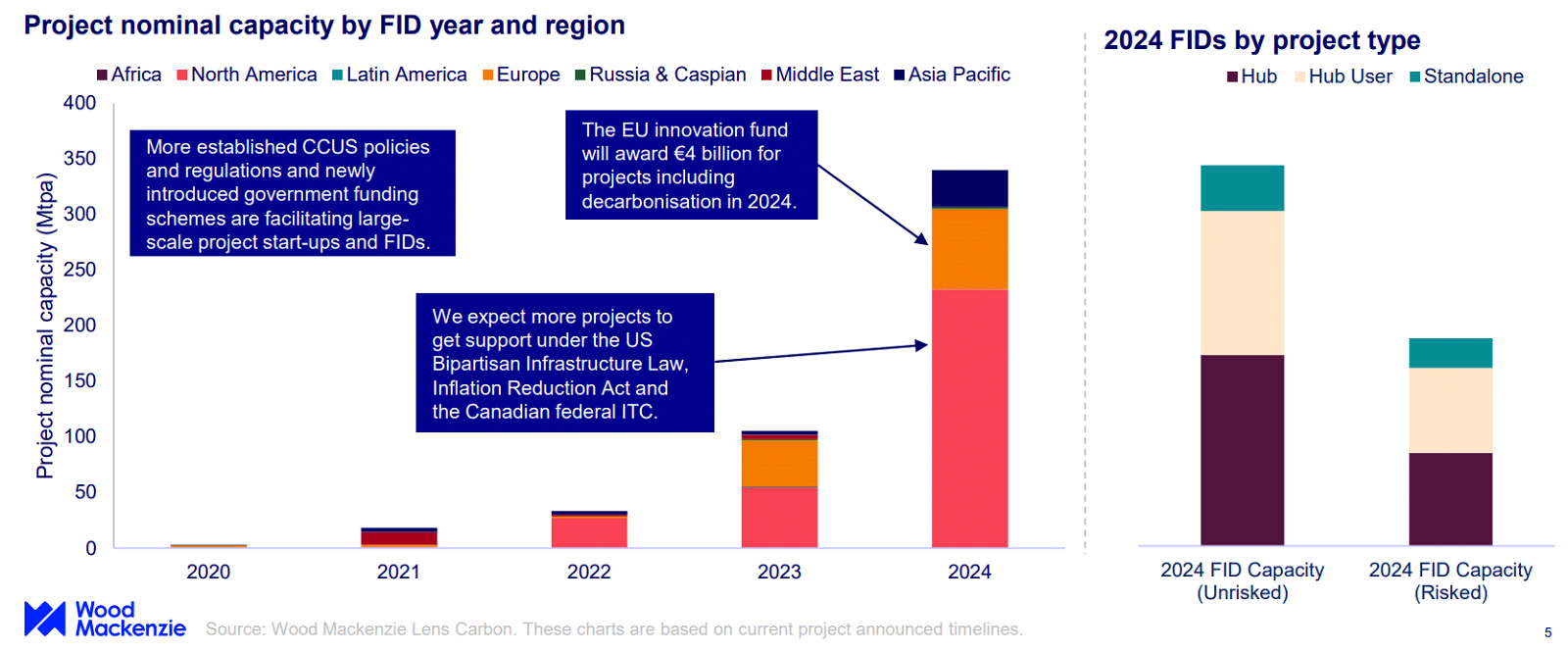

CCS can support countries in their energy transition by tackling emissions in hard-to-abate sectors. In Australia, industries like steel, cement, aviation, and agriculture contribute up to one fifth of greenhouse gas emissions.
To meet our net zero targets, advanced modelling suggests that Australia needs to be capturing and storing at least 80 million tonnes of CO2 each year by 2035. There are between 18 and 27 CCS projects currently in development or operation in Australia.
Earlier this year, work began on a major CCS hub off the coast off Darwin, while another set to be capturing and storing carbon from industry in the Gippsland Basin soon. Most notable is the Gorgon Project in Western Australia. With a projected lifetime storage capacity of 120 million tonnes, it is the largest operational CCS project on the planet.
In their recent report, Stephanie Chiang, a research analyst at Wood Mackenzie, estimates that opening Australia’s excess storage capacity to regional emitters could generate US$325–385 billion in revenue, assuming a transport and storage fee of US$33–39 per ton of CO2.
CCS offers the dual benefit of reducing emissions and creating new jobs and industries. The Australian Energy Producers Conference highlights CCS as pivotal for Australia’s net zero ambitions.
Samantha McCulloch, Chief Executive of Australian Energy Producers, highlights the significant economic and emissions reduction opportunities presented by CCS, calling for a national CCS roadmap. She noted that:
“Australia knows how to be a resources and energy powerhouse and has built a gas industry that is the envy of the world. Now it can become a decarbonization powerhouse.”
The 2024 Australian Energy Producers Conference & Exhibition in Perth will feature the release of the Australian Energy Producers Journal. This includes insights from Wood Mackenzie about Australia’s potential AU$600 billion CCS industry.
According to Wood Mackenzie, Australia’s vast CO2 storage capacity can serve regional emitters like Japan and South Korea, which lack sufficient storage. This could generate substantial revenue by charging for CO2 transport and storage.
Policy and Industry Support for CCS in Australia
The Energy News Bulletin (ENB) CCS Report 2024 highlights CCS as a critical solution for Australia’s decarbonization efforts, noting that policymakers in advanced economies, including Australia, are committed to achieving net zero emissions.
However, ENB criticizes the Australian government for not prioritizing CCS implementation as urgently as Northern America and Western Europe. The report examines CCS’s status and potential in Australia, comparing it with other regions.
Energy companies like Woodside Energy and Santos face criticism from climate activists. However, ENB emphasizes that significant progress is being made to reduce emissions intensity. And CCS could be pivotal in achieving net zero goals while continuing hydrocarbon production.
However, Australia needs to develop comprehensive regulations for CCS and provide stronger government support and a clear industry roadmap. This would attract investors and solidify Australia’s position as a carbon storage hub.
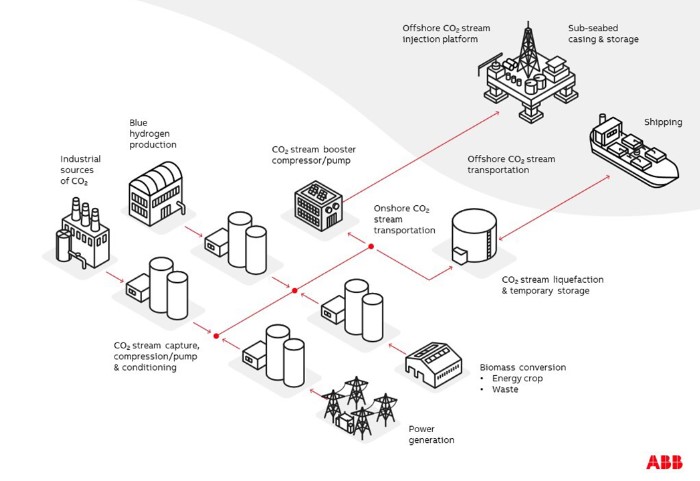
Recent Australian laws permit international CO2 transport and offshore storage, and the 2024-25 Federal Budget allocated AU$32.6 million to support regional cooperation and establish necessary regulations.
Pilot Energy and International Collaboration in CCS
In related news, Pilot Energy, an Australian company, will host a Korean delegation on May 23 at its Mid West Clean Energy Project (MWCEP) near Geraldton, Western Australia, with support from Austrade.
The visit coincides with the Australia-Korea CCUS Industry Seminar in Perth and reflects strong Korean interest in CCS. This carbon removal technology will help achieve South Korea’s net zero goals.
This visit follows significant policy advancements in Australia’s CCS industry. Recently, Northern Australia’s Resources Minister Madeleine King announced that more greenhouse gas acreage would be available for CCS as part of the Albanese government’s Future Gas Strategy. Additionally, the government committed AU$566 million to new offshore mapping programs to identify CCS and clean hydrogen project sites.
Pilot Energy’s MWCEP plans to repurpose the depleted Cliff Head offshore oil field into a permanent CO2 storage facility. The initiative will start in 2026, with a capacity to store over 1 million tonnes of CO2 annually.
As Australia advances its CCS capabilities, it can leverage its resource expertise to become a decarbonization powerhouse, becoming a leader within the Asia-Pacific region.
- SEO Powered Content & PR Distribution. Get Amplified Today.
- PlatoData.Network Vertical Generative Ai. Empower Yourself. Access Here.
- PlatoAiStream. Web3 Intelligence. Knowledge Amplified. Access Here.
- PlatoESG. Carbon, CleanTech, Energy, Environment, Solar, Waste Management. Access Here.
- PlatoHealth. Biotech and Clinical Trials Intelligence. Access Here.
- Source: https://carboncredits.com/australia-has-a-us400b-carbon-capture-opportunity-wood-mackenzie-says/
- :has
- :is
- :not
- $UP
- 1
- 120
- 2024
- 2026
- 2035
- 23
- 27
- 500
- 6
- 700
- 80
- a
- About
- Achieve
- achieving
- activists
- Additionally
- advanced
- advancements
- advances
- agriculture
- allocated
- ambitions
- america
- an
- analyst
- and
- announced
- Annually
- annum
- Another
- ARE
- around
- AS
- assuming
- At
- attract
- Australia
- Australian
- Australian company
- available
- aviation
- BE
- become
- becoming
- began
- being
- benefit
- between
- Billion
- budget
- built
- bulletin
- by
- calling
- CAN
- capabilities
- Capacity
- capture
- Capturing
- carbon
- carbon capture
- cement
- charging
- chief
- Chief Executive
- clean
- clean energy
- clear
- Climate
- Cluster
- co2
- Coast
- coincides
- collaboration
- committed
- Companies
- company
- comparing
- comprehensive
- Conference
- continuing
- contribute
- cooperation
- could
- countries
- country’s
- Creating
- critical
- criticism
- Criticizes
- Currently
- decarbonization
- delegation
- develop
- Development
- Domestic
- dual
- e
- each
- Economic
- economies
- efforts
- Emissions
- emphasizes
- energy
- establish
- estimated
- estimates
- Ether (ETH)
- Europe
- Examines
- example
- exceeds
- excess
- executive
- expertise
- Face
- Facility
- far
- Feature
- Federal
- fee
- Fees
- field
- fifth
- follows
- For
- from
- future
- GAS
- generate
- Global
- Goals
- Government
- government support
- greenhouse gas
- Greenhouse gas emissions
- Grow
- head
- help
- highlights
- host
- How
- How To
- However
- HTTPS
- Hub
- identify
- implementation
- in
- includes
- Including
- industries
- industry
- Initiative
- insights
- interest
- International
- into
- Investors
- IT
- ITS
- Japan
- Jobs
- journal
- jpg
- Key
- King
- knows
- korea
- Korea’s
- Korean
- Lack
- largest
- Laws
- leader
- least
- Leverage
- lifetime
- like
- made
- major
- mapping
- max-width
- May..
- Meet
- metric
- Mid
- million
- minister
- modelling
- more
- most
- National
- Near
- necessary
- needs
- net
- New
- news
- notable
- noted
- noting
- now
- of
- off
- Offers
- Oil
- on
- ONE
- opening
- operation
- operational
- opportunities
- Opportunity
- Options
- or
- Other
- our
- over
- part
- partners
- per
- permanent
- Perth
- pilot
- pivotal
- planet
- plans
- plato
- Plato Data Intelligence
- PlatoData
- policy
- policymakers
- position
- potential
- powerhouse
- presented
- prioritizing
- Producers
- Production
- Programs
- Progress
- project
- projected
- projects
- provide
- recent
- recently
- reduce
- reducing
- reducing emissions
- reduction
- reflects
- region
- regional
- regions
- regulations
- related
- release
- removal
- report
- Reported
- research
- resource
- Resources
- revenue
- roadmap
- says
- Sectors
- seminar
- serve
- set
- she
- significant
- Sites
- solidify
- solution
- Soon
- Source
- South
- South Korea
- start
- Status
- steel
- storage
- storage options
- store
- storing
- Strategy
- strong
- stronger
- substantial
- sufficient
- Suggests
- support
- tackling
- targets
- Technology
- than
- that
- The
- The Initiative
- the world
- their
- There.
- this
- this year
- to
- Ton
- Trading
- transition
- transport
- transporting
- type
- urgently
- Vast
- Visit
- West
- Western
- Western Europe
- which
- while
- will
- with
- within
- wood
- Work
- world
- would
- year
- zephyrnet
- zero

